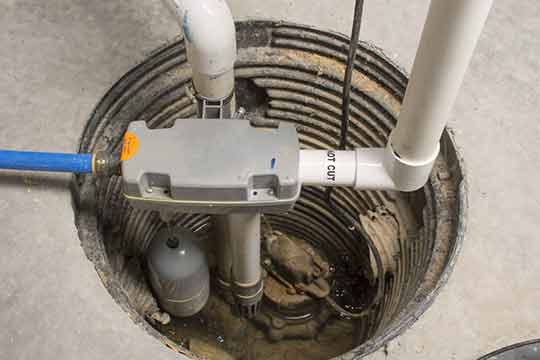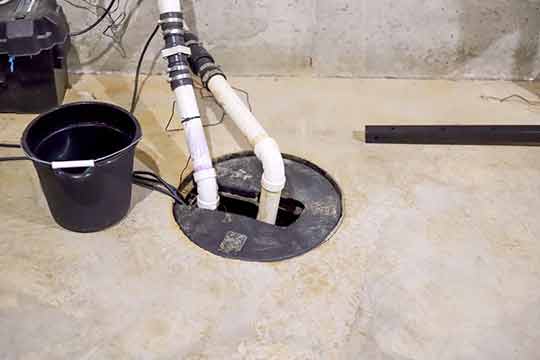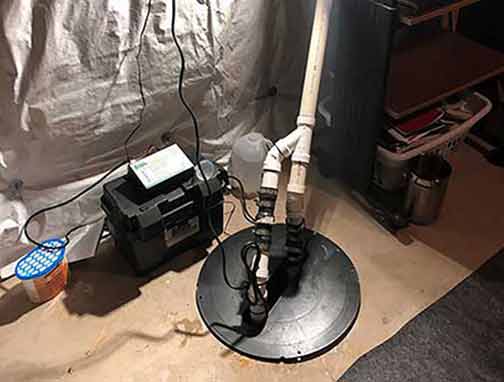
Welcome to our guide on the essential plumbing fixture known as the sump pump. In this article, we will explore the importance of sump pumps, how they work, their various types, installation process, maintenance tips, and more. Whether you are a homeowner looking to safeguard your basement or a plumbing professional seeking deeper knowledge about this critical device, this article will provide valuable insights and useful information. Let’s dive in!
What is a Sump Pump?
A sump pump is a mechanical device designed to prevent water damage in properties, particularly in basements or crawl spaces prone to flooding or excess water accumulation. It is typically installed in a sump pit, a specially constructed basin or reservoir located below ground level.
The primary function of a sump pump is to automatically detect water accumulation in the sump pit and efficiently remove it to prevent flooding. By quickly pumping out excess water, sump pumps help to protect buildings, foundations, and valuable belongings from water damage, mold, and other potential issues caused by excessive moisture.
The Importance of Sump Pumps
Sump pumps play a crucial role in maintaining a dry and safe environment, especially in areas with high water tables, frequent heavy rains, or poor drainage systems. Here are some key reasons why sump pumps are considered an essential plumbing fixture:
- Preventing water damage: One of the primary purposes of a sump pump is to prevent water from accumulating in basements and causing extensive water damage to the property. By effectively removing excess water, the risk of costly repairs and mold growth is significantly reduced.
- Protecting property: Sump pumps not only help prevent structural damage to your property’s foundation but also safeguard valuable items stored in the basement, such as furniture, appliances, and personal belongings. These devices provide peace of mind, knowing that your possessions are protected against water damage.
- Maintaining indoor air quality: Excessive moisture and mold growth can have a detrimental impact on indoor air quality, posing health risks to occupants. Sump pumps help decrease the chances of mold and mildew development, promoting a healthier living environment.
- Preventing basement flooding: Basement flooding can occur due to heavy rains, plumbing leaks, or rising groundwater levels. Sump pumps effectively minimize the risk of flooding by quickly removing excess water and diverting it away from the property, ensuring a dry and functional basement space.

Types of Sump Pumps
Sump pumps are available in various types, each offering specific features tailored to different needs. Understanding the different types can help you choose the most suitable sump pump for your property. Here are the most common types:
1. Submersible Sump Pump
A submersible sump pump is designed to be fully submerged in the sump pit, making it more discreet and less prone to clogging. It operates quietly and is typically more durable. Submersible pumps are ideal for basements with limited space or areas that require silent operation, such as bedrooms or living spaces directly above the sump pit.
2. Pedestal Sump Pump
A pedestal sump pump consists of a motor installed above the sump pit, with a hose or pipe extending down into the pit to remove the water. These pumps are generally less expensive than submersible pumps and easier to maintain, as the motor is easily accessible. Pedestal pumps are recommended for larger sump pits or places where noise is not a concern.
3. Battery Backup Sump Pump
A battery backup sump pump is an additional sump pump system that operates using a backup power source, typically a rechargeable battery. It serves as a reliable backup in case of power outages or pump failures, ensuring continuous protection against flooding. Battery backup sump pumps are particularly useful for areas with a high risk of power disruptions or severe weather conditions.
4. Combination Sump Pump
A combination sump pump integrates the features of a primary pump and a battery backup pump into a single unit. This type provides both primary pumping capabilities and backup protection, offering homeowners a convenient and comprehensive solution for flood prevention. Combination sump pumps are highly recommended for those seeking maximum reliability and peace of mind.

Installation Process
While it is recommended to hire a professional plumber for the installation of a sump pump, understanding the installation process can help you make informed decisions and communicate effectively with the plumber. Here are the general steps involved:
1. Assessing the basement:
Prior to installation, a thorough assessment of the basement is necessary to determine the ideal location for the sump pit and pump. Factors such as the basement’s layout, water entry points, and existing drainage systems are taken into consideration.
2. Digging the sump pit:
Once the optimal location is determined, a hole is excavated to create the sump pit. The pit should be large enough to accommodate the pump and allow easy access for maintenance and repairs.
3. Installing the sump pit and pump:
The sump pit is placed into the excavated hole, ensuring that the top rim is level with or slightly above the basement floor. The pump is then installed inside the pit, securely fastened in place.
4. Connecting the discharge pipe:
The discharge pipe is connected to the sump pump and directed away from the property’s foundation. This pipe carries the pumped water to an appropriate drainage area, such as a municipal storm drain or a designated area on the property.
5. Testing the system:
Once the installation is complete, the system is thoroughly tested to ensure proper functionality. The sump pump should activate automatically when water accumulates in the sump pit, effectively pumping it out through the discharge pipe.
Maintenance and Troubleshooting Tips
Regular maintenance of your sump pump is essential to ensure it operates optimally and provides reliable protection against flooding. Here are some maintenance tips to keep in mind:
1. Check the pump regularly:
Periodically inspect the sump pump to ensure it is in good working condition. Check for any signs of physical damage, debris accumulation, or clogged intake screens. Clear away any obstructions that may hinder the pump’s performance.
2. Test the pump:
Test the sump pump regularly by pouring water into the sump pit. Observe if the pump activates automatically and effectively removes the water. If it doesn’t work as expected, seek professional assistance to troubleshoot and repair any issues.
3. Clean the sump pit:
Keep the sump pit clean and free from dirt, gravel, and other debris. A clean pit ensures optimal pump performance and reduces the risk of clogs.
4. Replace the backup battery:
If your sump pump has a battery backup system, it is important to test and replace the battery as required. Backup batteries should be replaced every 2-3 years to ensure they are fully functional during power outages.
5. Schedule professional maintenance:
Consider scheduling annual maintenance with a local plumber to thoroughly inspect and service your sump pump. They can identify and address any potential issues before they escalate, increasing the longevity and reliability of your sump pump.
Conclusion
Sump pumps are indispensable plumbing fixtures that provide essential protection against water damage and basement flooding. By effectively removing excess water, they help maintain a dry and safe environment while safeguarding property and belongings. Understanding the different types of sump pumps, the installation process, and proper maintenance practices is crucial for homeowners and professionals alike.
With this knowledge, you can make informed decisions regarding the selection, installation, and upkeep of sump pumps, ensuring long-lasting flood prevention and peace of mind.

